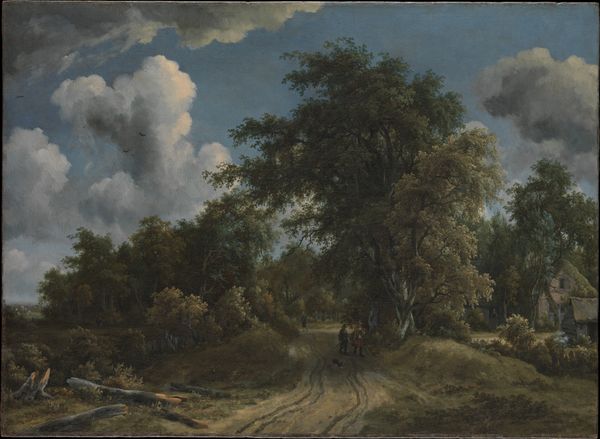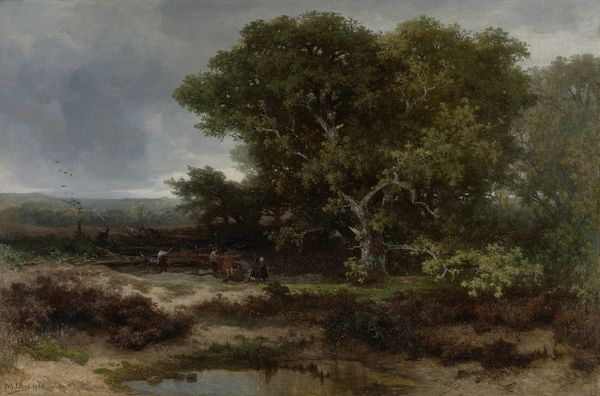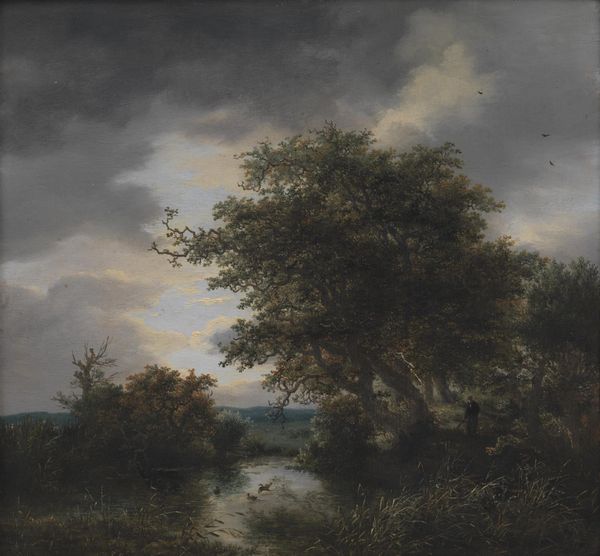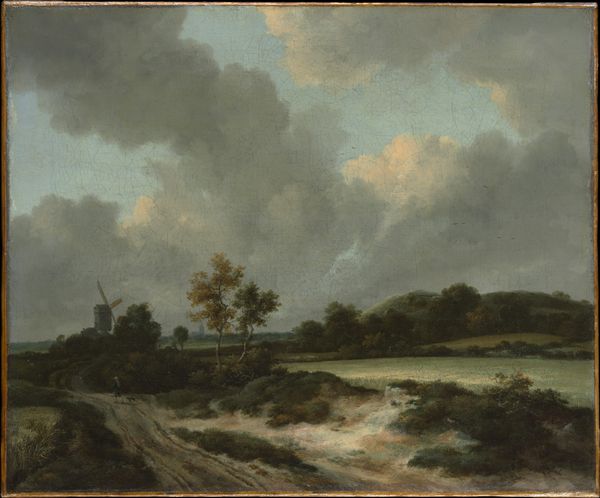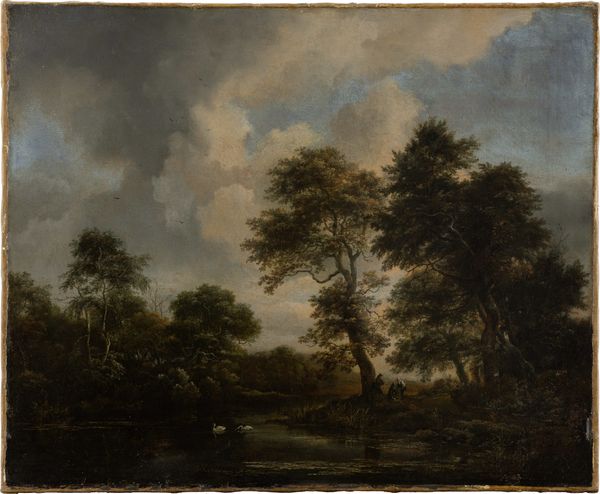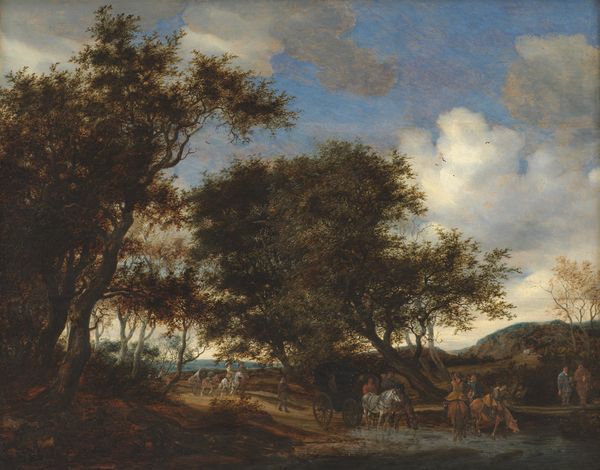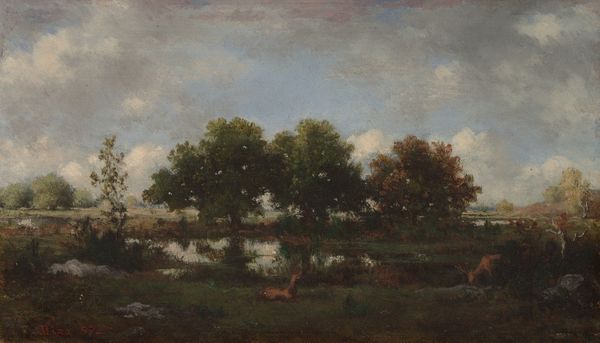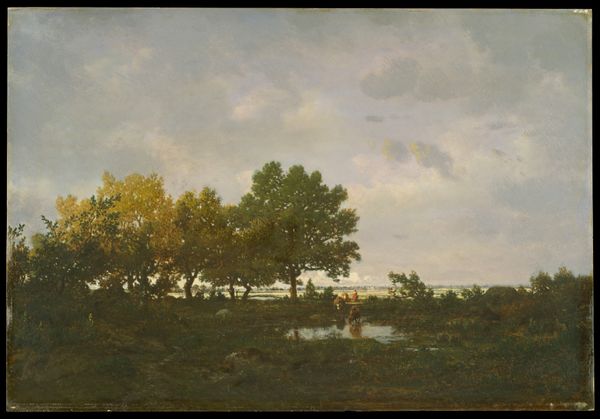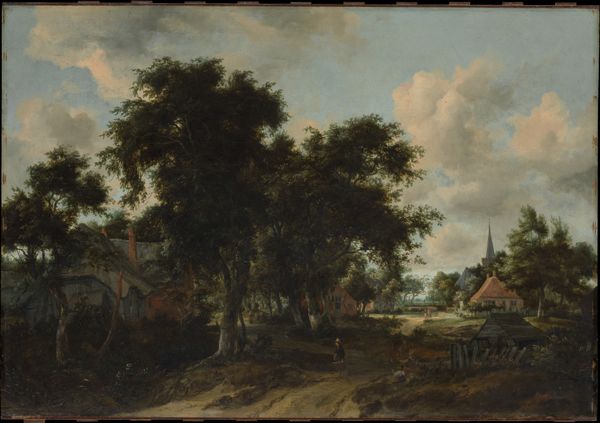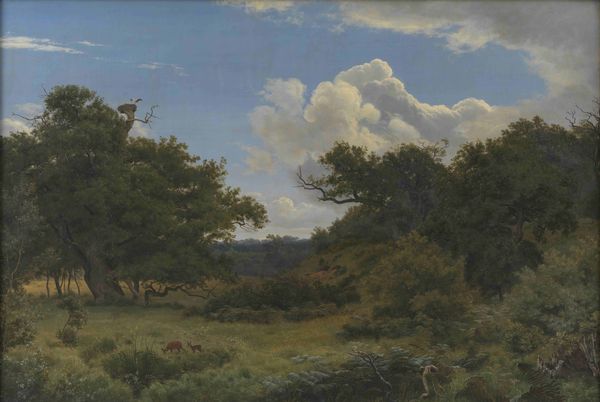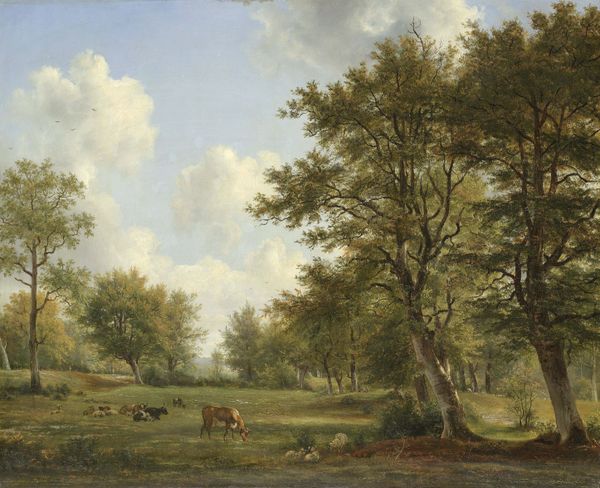
Dimensions: 30 x 43 in. (76.2 x 109.2 cm)
Copyright: Public Domain
Curator: Standing here, we're observing Jacob van Ruisdael's "Landscape with a Village in the Distance," an oil painting completed around 1646 and currently held at the Metropolitan Museum. Editor: It feels very melancholic. The low horizon, the dominating sky… there’s a palpable sense of solitude despite the implied presence of community. Curator: Indeed. Ruisdael masterfully captures the atmosphere. During the Dutch Golden Age, landscape painting was developing in the context of urbanization and land reclamation. We might see it as reflecting on ideas of national identity bound to the territory. Editor: Right, but also perhaps anxieties tied to that very claim. Who has access, who is excluded, who owns that sense of identity you're describing? The figure on the road almost fades into the background, underscoring a quiet marginalization. Curator: It's interesting that you focus on the individual against the backdrop of the village, as though representative of Dutch society itself. Remember though the burgeoning middle class—new wealth and a very different set of priorities began reshaping Dutch society and imagery. The church spire reminds us too of enduring structures of power. Editor: And I can't help but see the painting as almost theatrical— the stage is set, lit dramatically, yet we're missing a key element in the foreground action: those traveling a landscape often not equally open to all its residents, particularly religious outsiders, or other marginalized members. That church’s shadow would have touched many lives differently. Curator: Certainly. And beyond the purely historical considerations, we could talk about the sheer skill with which Ruisdael uses light to create such a feeling of depth and scale. It draws you in… Editor: …into a specific rendering of the national narrative, yes. A place depicted in meticulous detail and from a clear perspective; a national mythology, made visible. These works helped reinforce emerging values tied to both class and country. Curator: I appreciate your point about narratives. Understanding what this work tells us about landscape, about Dutch society, is a continuous project. Editor: Precisely. And considering the silent players in its making — whose stories are also integral to understand not just this painting, but this period in time.
Comments
No comments
Be the first to comment and join the conversation on the ultimate creative platform.
